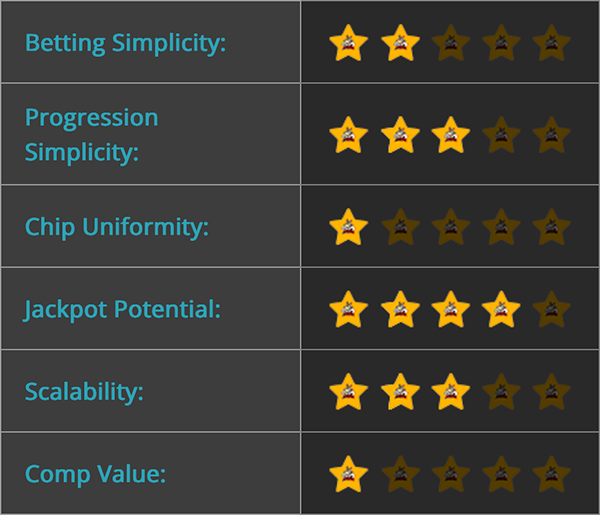
This month we've added a new feature to the JackAce Roulette System Catalog. We're adding ratings subcategories!
In addition to CEG's rating and my rating for every system, we will display the breakdown of the subcomponents of the rating. It offers a lot of insight into how the overall rating was determined.
The 6 subcategories for the rating are as follows:
- Betting Simplicity
- Progression Simplicity
- Chip Uniformity
- Jackpot Potential
- Scalability
- Comp Value
You can see an example of the subratings in my recent review for the system D-Gen TEC-9 🔫 .
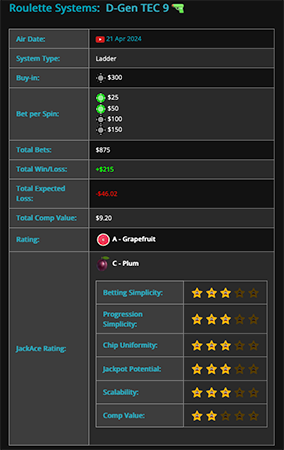
Betting Simplicity
This is the rating for the simplicity of the betting pattern(s). If there is more than one betting pattern, then this is usually a rating of the most complicated betting pattern amongst all betting tiers.
Any betting pattern where you make a single bet will get the highest rating.
Any betting pattern where you make more than 5 individual bets is likely to get
a low rating. Any betting pattern where you bet many individual specific numbers
is likely to get a
 or
or
 rating.
rating.
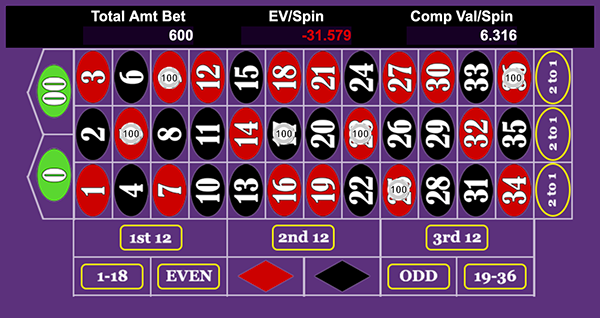
This is part of the overall "DTF" classification for the Roulette system. The easier the betting patterns are to place, the higher the Betting Simplicity score will be.
Progression Simplicity
The Progression Simplicity is used to measure the complexity of the betting tiers.
Is this a simple flat betting system? What are the conditions of going to the next tier? Is there complicated math needed to determine how much to bet? When do we reset to the first tier?
These are amongst the questions used to determine this subrating. The more complex the progression rules are, the lower the score will be.
A flat betting system will always get a
 out of 5. Martingale systems will most likely get a
out of 5. Martingale systems will most likely get a
 as well. Fibonacci systems will probably get a
as well. Fibonacci systems will probably get a
 , since there's a little math
involved.
, since there's a little math
involved.
Systems where you have to count wins before going back levels will tend to get lower scores for this category. And other systems with complicated rules will be penalized as well.
A good example of a system with bad Progression Simplicity would be Grapefruit Step System 👣🪜 . This is a 6 tiered system where each tier has ZERO resemblance to the next, and each tier requires memorizing several bets.
Chip Uniformity
You want to use betting amounts that only have to rely on a single chip denomination whenever possible. If you bet $3 per spot on one tier and then bet $25 per spot on another tier (or even within the same tier!), you'll score low for this category.
This can be a problem if you're playing at a live-dealer table if there are many others playing with you. Having a wide range of bet sizes requires that you use real cash-valued casino chips alongside your personal colored chips (since each player at the table usually gets their own assigned color).
You can't have multiple people using the real cash-valued casino chips at the same table because it makes it difficult to determine who the chip owner of each bet is. Imagine 5 different players at the same player each betting on the same number with the same colored chips. This would be a nightmare for the dealer.
You tend to have a wide gamut of chips needed for deep negative progression systems, especially Martingale and Fibonacci. With these systems, you often have to chase a loss with bets in the hundreds or even THOUSANDS range. So while those systems may fare well with the Progression Simplicity category, they'll do poorly in the Chip Uniformity score.
It's ok for a system to score low for this category if you only intend to use it on an Electronic Table Game (ETG). For ETGs, chip uniformity is mostly irrelevant.
One system with chip values all over the place is Grandma Fibonacci Pie 👵🥧 .
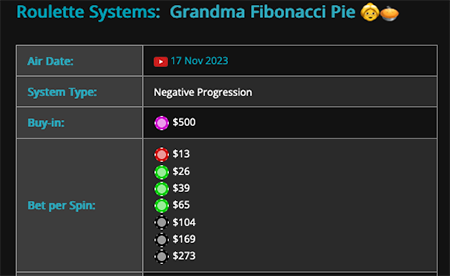
Jackpot Potential
This is one of the most important factors of the overall rating to me.
Jackpot Potential measures the system's ability to generate a large win. For this subrating to score highly, the system usually needs to have a positive progression or a ladder system with large winning potential. There are even some flat betting systems that have high jackpot potential.
Without a jackpot potential, there's very little motivation for me to like a system. I tend to give better scores to systems that either lose a little bit or win a lot.
Systems like Ride or Die 💀 or Last Tango in Vegas 💃 are good examples of systems with high Jackpot Potential.
Martingale is an example of a system with poor Jackpot Potential. With Martingale, you either win a little, or you lose your shirt.
You have good jackpot potential with the system Last Tango in Vegas 💃 .
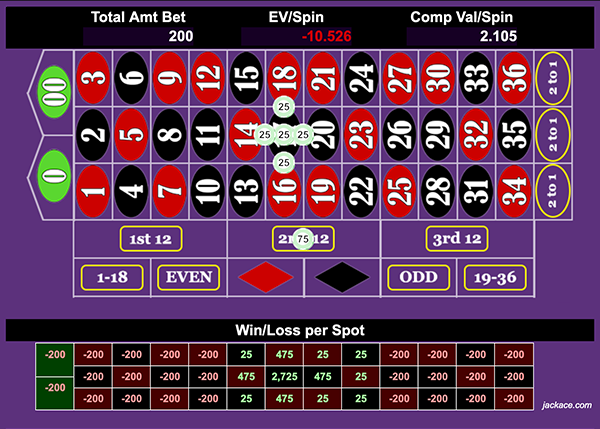
Scalability
Scalability is the flexibility in the betting system's bet amounts.
Can the system be scaled down for low rollers or ETGs? Can it be scaled up for whales and High Rollers? A good system is flexible and can be used by gamblers of all bankrolls.
This is why systems that bet odd amounts often score low. You want to have a system where all bets across all tiers have a same common denominator. There is some overlap between this category and the Chip Uniformity category.
The system Look at you, Buddy! is a good scalable system because you're just betting 2 units: one on the high/low and one on the uncovered dozen. You can scale this up or down very easily.
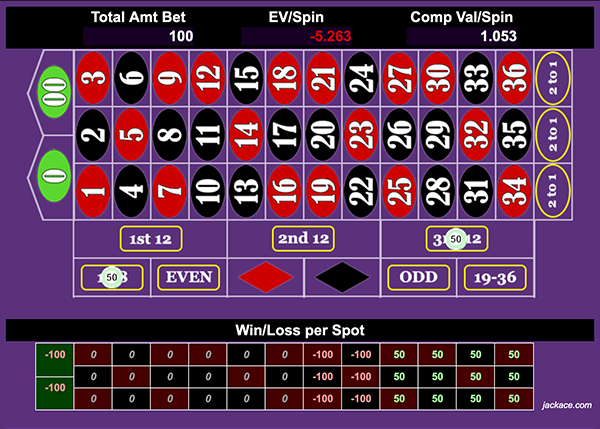
Comp Value
The last subrating is the Comp Value.
Will this system earn me free rooms and meals in Las Vegas? Will I rack up the rewards points using this system?
In order to be a system that is "Good for Comps" it has to have a high starting bet. And all the bets should be high.
This is another category where Negative Progression systems like Martingale and Fibonacci do poorly. But Positive Progression systems are not "Comp Friendly", either.
Systems that usually do best for this category are the Flat Bet systems. And these
systems usually need to have a high bet in the

range or more to qualify.
The system V28 was crowned "Best Comp System of 2023" in my Best of 2023 recap video.
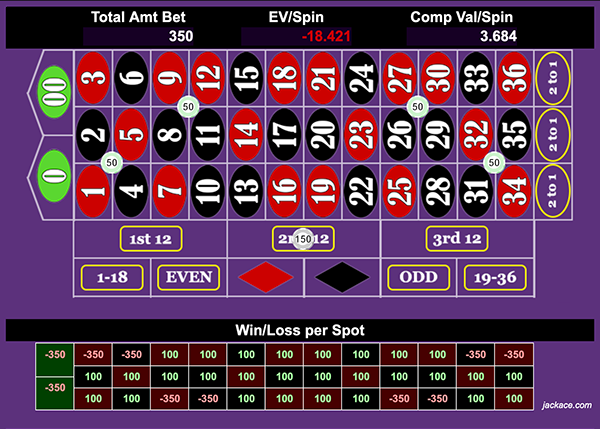
Overall Score
These 6 components are the main factors in determining the overall evaluation for each Roulette system in my Catalog.
I feel I should mention that each category is not weighted equally.
Comp Value has very little effect on the overall score. It is really only included for completeness, since many people look for "comp friendly" systems.
Scalability is another small factor overall. The systems are mostly judged based on the original parameters of the submitted design. But if the system is scalable (both downward and upward), it's possible to enhance the score's overall rating by a few ticks.
A lot of weight is given to the Jackpot Potential category. I firmly believe that going for small wins is ultimately a "hedging" strategy, and hedging strategies have you betting more to win less. That results in a larger expected loss and it lowers variance. This is bad for someone trying to overcome the house's edge.
Thoughts?
So what do you think of these new subcategories? Are there factors that I am missing? Let me know in the comments or tag me in Twitter with your thoughts!
